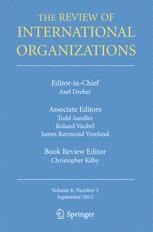By Haftel, Yoram, and Tobias Lenz

Over the past decade, an increasingly sophisticated literature has sought to capture the nature, sources and consequences of a novel empirical phenomenon in world politics: the growing complexity of global governance institutions. However, this literature has paid only limited attention to questions of measurement, which is a prerequisite for a more comprehensive understanding of global governance complexity across space and time. This paper takes a first step in this direction by making two contributions. First, we propose a new quantitative measure that gauges the extent of complexity in global governance, which we conceptualize as the degree to which global governance institutions overlap. Dyadic, directed and monadic versions of the measure enable a multifaceted understanding of this important development in world politics. Second, we illustrate the measure by applying it to an updated version of the most comprehensive dataset on the design of intergovernmental organizations (IGOs) – the Measure of International Authority (MIA). This allows us to identify cross-sectional and temporal patterns in the extent to which important IGOs, which tend to form the core of sprawling regime complexes in many issue areas, overlap. We conclude by outlining notable implications for, and potential applications of, our measure for research on institutional design and evolution, legitimacy and legitimation, as well as effectiveness and performance.

» Supplementary / replication files
Published:
2022
DOI:
doi.org/10.1007/s11558-021-09415-3
PDF:
Haftel-Lenz2022_MeasuringInstitutionalOverlapI
(632.10 KB)